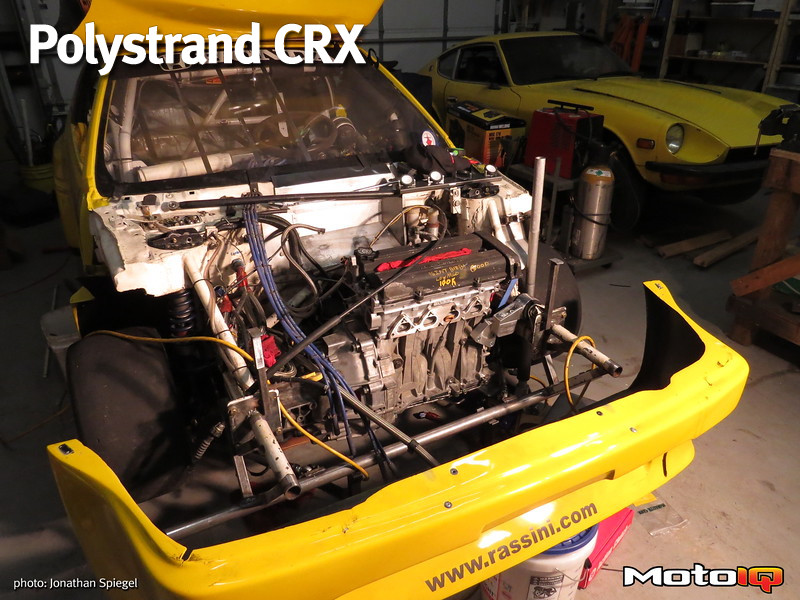,
 Besides lubing the threads, make sure to get some lube on both surfaces of the washers as well. Failure to do this can lead to inconsistent bolt torque.
Besides lubing the threads, make sure to get some lube on both surfaces of the washers as well. Failure to do this can lead to inconsistent bolt torque.As far as cylinder head work goes, a little mild porting was done. Aside from blending the valve seats, a little massage work was done on the short turn radii on the intake side, and the exhaust ports (aside from the seats) are mostly left alone. Once again, we’re looking for mid-range torque, and the valve seat blending helps boost the low-lift flow so critical to building power in the desired rpm range. We’re sticking with stock valves at this point, along with a fresh three-angle valve job on the seats – paying close attention to the width of the seat cut. Keeping the ports small and efficient maintains the velocity of flow, and we’re going to start with a stock intake manifold as well so that we have long narrow intake runners. In order to gain more compression we shaved the head – keeping in mind that we wanted to optimize squish clearance, which plays a huge factor in promoting a thorough combustion cycle while reducing the risk of detonation.
 The pistons are assembled on the Brian Crower connecting rods, and the bearing shells are installed. Note the generous dose of moly assembly lube on the ARP rod bolts.
The pistons are assembled on the Brian Crower connecting rods, and the bearing shells are installed. Note the generous dose of moly assembly lube on the ARP rod bolts. With the piston rings properly indexed, a very light coating of motor oil is applied to the rings and piston skirts, and the number 1 piston/rod assembly is installed into the block.
With the piston rings properly indexed, a very light coating of motor oil is applied to the rings and piston skirts, and the number 1 piston/rod assembly is installed into the block. The valves, seals, and Brian Crower valvesprings and retainers are installed into the head using a valve spring compressor. Be certain to install the valve keepers carefully, and wear safety glasses! After each valve assembly is installed, tap the end of the valve stem smartly with a soft-faced hammer to ensure the keepers are seated. If you’ve done it wrong, the keepers and retainer can be ejected with dangerous force – hence the eye protection.
The valves, seals, and Brian Crower valvesprings and retainers are installed into the head using a valve spring compressor. Be certain to install the valve keepers carefully, and wear safety glasses! After each valve assembly is installed, tap the end of the valve stem smartly with a soft-faced hammer to ensure the keepers are seated. If you’ve done it wrong, the keepers and retainer can be ejected with dangerous force – hence the eye protection.Once the head was assembled, we needed to check for sufficient piston to valve clearance. Lots of people use clay – but clay is tricky to work with, and it’s hard to be consistent, especially when you’re trying to measure things to thousandths of an inch. I do use a little clay – but not to measure clearance. I use it to hold pieces of soft electrical solder in place. Solder is soft enough that it will deform when you rotate the engine by hand, and it holds its shape exactly after deformed. It’s a great way to accurately measure squish clearance too. A word of caution – when rotating the engine through TDC with the solder in place, I like to do it in steps – apply a little pressure after you feel interference, back up a little, then bring it up again and apply a little more pressure. Usually, it only takes two or three steps. This gradually flattens the solder without undue force, especially if the solder is a lot thicker than needed. With the solder “tacked” in place with bits of clay, we installed the cylinder head with a used gasket and torqued it in place.
 Getting ready to check piston to valve clearance. Small bits of modeling clay are used to hold some soft solder in place at each valve relief. Solder works much better than big gobs of clay, since the solder won’t try to stick to anything, and will retain its final thickness much better than clay, making measurement much easier.
Getting ready to check piston to valve clearance. Small bits of modeling clay are used to hold some soft solder in place at each valve relief. Solder works much better than big gobs of clay, since the solder won’t try to stick to anything, and will retain its final thickness much better than clay, making measurement much easier.



2 comments
Any progress on this thing? It’s such an awesome project.
Any updates?